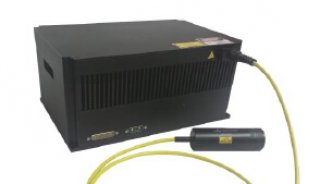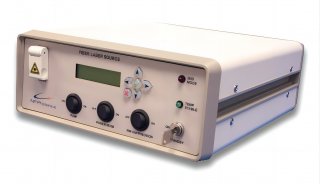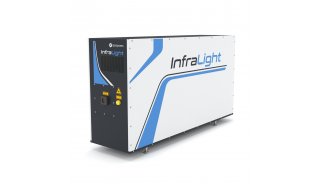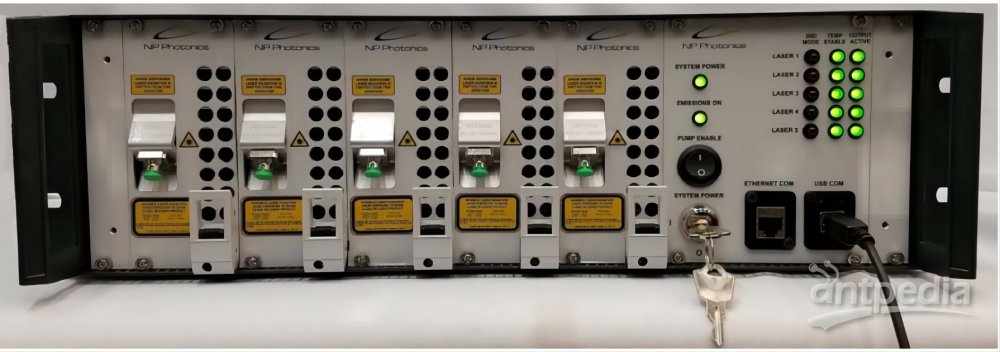Bromodeoxyuridine Immunohistochemistry
Introduction: This method for the detection of cellular proliferation includes several modifications of a previously published protocol (Hayashi, et al., 1988, J. Histochem. Cytochem. 36:511-514). This method utilizes formalin-fixation, paraffin-embedding, and an anti-BrDU mAb that detects BrDU in ssDNA after denaturation and neutralization. Because it has been optimized for midgestational murine lens analysis, it may require further adjustment for other tissues.
Abbreviations: e (embryonic day), RT (room temp.), EtOH (ethanol), O/N (overnight)
Method:
A. BrDU Treatment, Fixation, and Sectioning:
1. Prepare Bromodeoxyuridine: 10mg/ml in 1X PBS. Make up BrDU in a light-protected conical and solubilize at 37°C. Estimate the amount of BrDU at prepare by assuming that each mouse is 40g.
2. Inject BrDU into a pregnant mouse intraperitoneally at 100 µg BrDU/g body weight (Miller and Nowakowski, 1988, Brain Res. 457: 44-52) using a 26 gauge needle and a 1cc syringe.
3. Embryos are removed from the mother and placed quickly in a dish of ice-cold 1XPBS.
4. Fix embryo heads for 2 hr RT. Tissue samples are placed in a scintillation vial containing apx. 20ml 10 buffered formalin. For e14.5 and older embryos, the head should be removed and fixed separately from the body. Place on an orbital shaker such that the sample moves slightly. The sample must settle to the bottom.
5. Rinse with 1XPBS Gently pour off the fixative into biohazard container. Do not let the samples dry between the following steps, and use apx. 20 ml for each reagent (step 3-7).
6. 30, 50, 70, 95, 100 x 2, RT, 30 min. each, with slight agitation. This step functions to dehydrate the tissues through an increasing ethanol series: Samples in 70, 95, or 100 may be stored O/N, 4°C if time does not permit completion through at least one paraffin embedding step (step 6).
7. EtOH/xylene (1:1), RT; xylene, RT; and xylene/paraffin (1:1), 58°C; 30 min. each with slight agitation. xylenes should be handled in a chemical fume hood with gloves, and disposed of in a biohazard container.
8. 3 paraffin changes, 58°C, at least one is O/N and the others are at least 3 hrs.; manually shake occasionally.
9. Orient the head in melted paraffin, and let solidify for one hour on ice. Place sections (3mm thick) on poly-L-lysine coated or positively charged slides. Label the sections on the frosted surface with a permanent marker.
B. Exposure of DNA to Anti-BrDU Antibody
Note: For interpretable data, BrDU analysis should include three controls. One lens with documented presence, and another with absence, of proliferation serve as positive and negative controls, respectively. To detect endogenous peroxidase activity (or background staining), one lens section is processed through all steps except #11.
1. Xylenes 10 min. x 2, RT. Deparaffinization of sections takes place in Coplin staining dishes. To prevent the slide label from being removed, place the slides in xylenes vertically such that the frosted surface is up, and not immersed.
2. 100, 95 x 2, 70, 50; 2 min. each, RT. Rehydration is done in rectangular staining dishes with a slide rack that is moved successively from dish to dish.
3. 1X PBS, 5 min. X 3
4. 10 methanol, 3 H2O2 in 1X PBS, 30 min., RT. Block endogenous peroxidases in a staining dish.
5. 1XPBS, 4 X 5 min., RT
6. Pepsin/HCI, 20 min. (try 30 - 40 min.), RT in a humidifies chamber. Prepare 200 mg/ml pepsin, 0.01N HCI in PBS [from 10 mg/ml pepsin prepared fresh in ddH2O(50x) and 2N HCI (200X)]. Quickly remove slide, blot excess in PBS, encircle the section with a PAP pen and quickly cover with a sufficient amount of pepsin/HCI (usually apx. 200 ml).
7. 2N HCI bath, 45 min., RT Aspirate off the pepsin and denature the DNA in an acid bath.
8. 0.1 M Sodium Borate, pH 8.5, 10 min. RT, Neutralization can be done in a bath or in a humidified chamber.
9. Wash in PBS, 10 min., RT. This can be done in a bath or a humidified chamber.
Note: subsequent steps take place in a humidified chamber utilizing VectaStain kits from Vector Laboratories with some alteration to the manufacturer''s instructions.
10. Block 30 min. RT Prepare blocking reagent: add 1 drop of normal horse serum in 3.3 ml 1X PBS and vortex well.
11. Diluted Mouse anti-BrDU IgG1 4°C O/N: Suction off the blocking solution and incubate with the primary mouse anti-BrDU IgG1 (1:20 dilution in blocking solution). This step must incubate for a minimum of 5 hours. As a negative control, one section should remain in block solution.
C. Immunohistochemistry using an avidin/biotin/peroxidase complex (ABC)
12. Warm slides at least 45 min., RT
13. 1X PBS, 3 min. X 5, RT.
14. Incubate all slides with secondary Ab 1 hr, RT.Prepare by adding 1 drop normal horse serum and 2 drops anti-mouse IgG-biotinylated Ab in 10 ml PBS, mix (a 1:200 dilution of secondary in block solution). Approximately 40 min. into the incubation, begin to prepare avidin/biotin/peroxidase complex (ABC). Add 1 drop of A to 5 ml PBS, vortex, add 1 drop of B, vortex, and let sit 30 min. RT.
15. 1X PBS, 3 min.X 5, RT.
16. ABC, 30 min., RT.
17. 1X PBS, 3 min. X 3.
18. pH 7.5 buffer, 15 min., RT: 1 drop pH 7.5 buffer in 2.5 ml house distilled water Do not use ddH2O and PBS. They inhibit the peroxidase reaction.
19. Replace buffer with DAB/H2O2, 3-10 min. RT. Prepare the DAB/H2O2 in a light protected conical: 1 drop pH7.5 buffer in 2.5 ml house distilled water, vortex, 1 drop H2O2, vortex.
19. 1X PBS, 5 min. When the reaction has stopped or there is background on the negative control, place the sides in
20. Mounting: dehydrate slides in 70, 100 EtOH 3 min, each, RT; air dry 1-2 min.; place a drop of Cytoseal on the slide, place a cover slip on top; store at RT.
21. Photograph under brightfield using Kodak Ektachrome 64T film.
Backup Protocols/Troubleshooting
Before analyzing tissues for apoptosis using and TdT protocol, it is advisable to optimize several parameters.
PK treatment time. The goal of PK treatment is to permeabilize the nucleus to allow TdT access to the DNA, without destroying the integrity of the tissue. Small changes in the ambient temperature of the room (such as season) may have a dramatic effect on PK activity. One may optimize PK treatment by varying the length of incubation. Deparaffinize and rehydrate the sections (steps 1-4), them PK treat for varying amounts of time(step 5). Rinse the slides of PK (step 6) and then H/E stain. Use the highest PK treatment time just before you destroy the integrity of the nucleus.
Blocking Endogenous Peroxidases It is essential to include an analysis of endogenous peroxidase levels (omit step 10). Background or endogenous levels may be a problem for analysis of the immune system or any organ that contains peroxidase-positive cells. This obstacle may be circumvented by Vectastain kits that rely upon detection other than peroxidase.
DEPC water For reasons that are unclear, this protocol works best with DEPC-treated water.
Positive Control Finding an appropriate positive control (same PK treatment, endogenous peroxidase levels) can be difficult. It is possible to use a different tissue on the same section that is being analyzed. For midgestational lenses, the retina can serve as a positive control because it undergoes developmental apoptosis.
| Reagents/Ordering Information | ||
| Reagent | Company | Catalogue # |
| Scintillation Vial | VWR-Wheaton | 66021-453 |
| 10 formalin | Polyscientific | S182 |
| Paraffin | Sigma | P-6887 |
| a-BrDU Ab | Becton-Dickinson | 7580 |
| BrDU | Serva | 1520 |
| Proteinase K | Boehringer Manheim | 1092766 |
| 30 H2O2 | Sigma | H1009 |
| TdT, Buffer | Gibco | 10533-016 |
| Biotinylated dCTP | USB | 12126 |
| Xylenes | Baker | 9498-01 |
| ABC Kit | Vector | PK4002 |
| DAB Kit | Vector | SK4100 (FK4100) |
| PAP Pens | Jersey Office | PEN513 |
| Cytoseal | VWR | 8310-4 |
| 2N HC1 | ||
| 1M Sodium Borate, pH 8.5 | ||
| 2X SSC | ||
| 100 Ethanol | ||
| 95 Ethanol | ||
| 10X PBS |




















